Ever wondered how to build your own self-driving car?
Picture this: a vehicle that drives itself, navigating the world with the power of AI and neural networks —and you can build it from scratch! Introducing Autonomous Driving Car V3, an intermediate-level project by Carenuity that brings the future of autonomous tech to your fingertips.
Using a Raspberry Pi 4, custom 3D-printed parts, and vision-based navigation, this project is perfect for AI enthusiasts, hardware hackers, or anyone curious about the tech shaping tomorrow's roads. Plus, the C/C++ code is open-source and ready for you to download, tweak, and experiment with!
Why dive in?
- Discover how AI powers autonomy.
- Get hands-on with 3D-printed designs you can customize.
- Join a community of innovators building the future.
The story behind the blueprint for your first own car
Now Autonomously Driving: The Reincarnation of a Winner
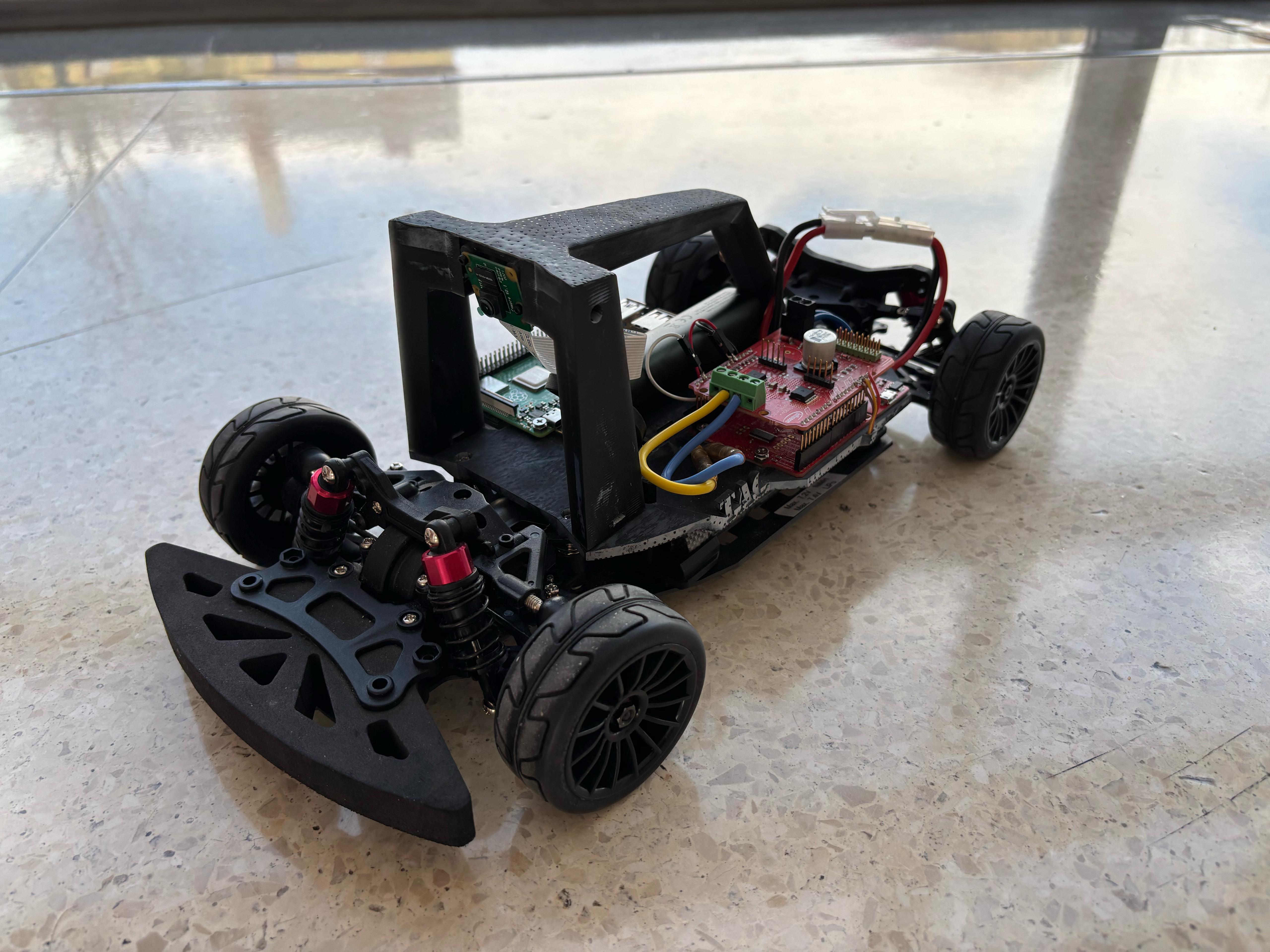






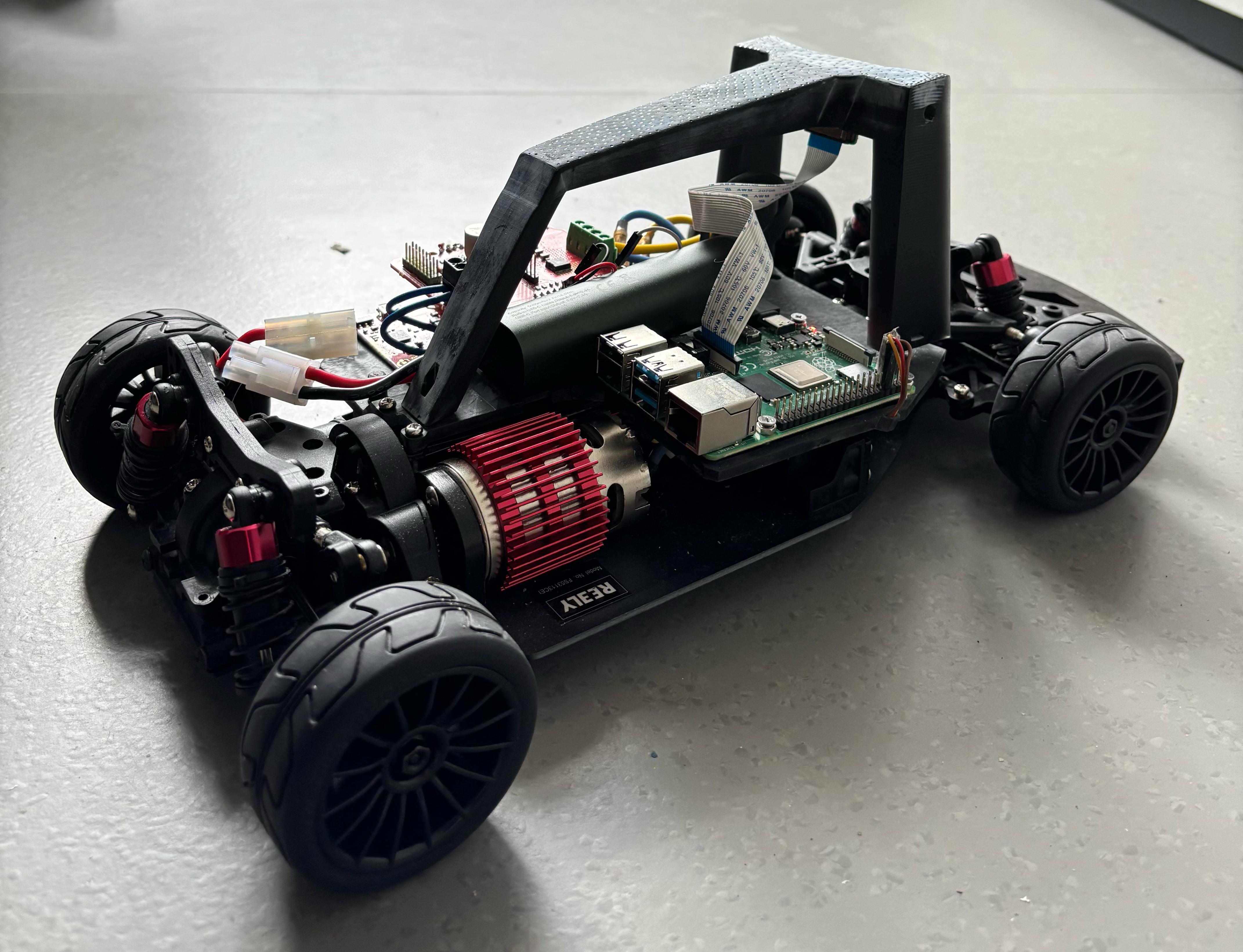
In the world of automotive innovation, history often serves as a foundation for future advancements. The Autonomous Driving Infineon Car, built by ChipGlobe's Carenuity team, is a testament to this principle. This cutting-edge vehicle not only embodies the latest in autonomous driving technology but also pays homage to the legendary Schaeffler FAG Model MF3, presented in June 2009. The shark-like design of the MF3, a symbol of speed and precision, has been reincarnated in 2025 in a 1:10 ratio model, showcasing the seamless blend of past and present engineering marvels.
The unveiling of the Schaeffler FAG Model MF3 took place at an evening event at the foyer of Schaeffler. This event was graced by notable figures such as Dr. Grunau, the former representative of the management board of FAG Schaeffler Group Industry, and Dipl.-Ing.
Seubert, the former chairman of the Unterfranken district association of the Verein Deutscher Ingenieure (VDI). Their presence underscored the importance of innovation and collaboration in the engineering community. After several wins, the MF3 was finally parked on the first floor of the THWS University in Schweinfurt, where it continues to inspire students and engineers alike.
Fast forward to today, the Autonomous Driving Infineon Car represents a leap forward in automotive technology. Built by Carenuity in 2025, this model leverages advanced AI competencies to navigate home and office environments autonomously. Carenuity's expertise in AI and sensor technology ensures that the vehicle can make real-time decisions with precision and reliability, enhancing safety and efficiency on its patrols.
The concept of autonomous driving extends beyond mere transportation; it transforms the vehicle into a versatile platform for advanced sensors. These sensors can be utilized to enhance the safety of smart homes and offices, potentially serving as patrol units that monitor and secure large environments. By integrating such advanced sensor technology, the Autonomous Driving Infineon Car can contribute to creating safer living and working spaces.
Moreover, Carenuity and Infineon are committed to transferring their building knowledge to selected international universities. This initiative aims to empower the next generation of engineers and researchers by providing them with access to cutting-edge technology and expertise. By fostering collaboration with academic institutions, Carenuity and Infineon are paving the way for continued innovation and excellence in autonomous driving and AI.
Notably, this latest autonomous driving car (V3) was built by Eren Arslan Ramazan, a talented student from THWS University, who previously won a competition for building smart real estate sensors in the course of the Carenuity Home Challenge. The Carenuity Home Challenge is an annual competition at the THWS, hosted by Prof. Heinz Endres, that encourages students to develop innovative smart home solutions. Participants are tasked with designing and building sensors that can improve the safety, efficiency, or convenience of home, office, and industrial environments. Eren's winning project involved creating a sophisticated barometer with a Bosch BMP180 / BME680 sensor, that could be integrated into various smart home applications, showcasing his ingenuity and technical skills.
The very first presentation of the Autonomous Driving Infineon Car (V1) was given by Harald Lehmann at a Pizza & Beer event in the canteen of Infineon headquarters in Neubiberg, Germany. The event was a showcase of technological prowess, where the car's capabilities were demonstrated in a controlled environment. Attendees were able to witness firsthand the vehicle's autonomous navigation and real-time decision-making processes. This presentation highlighted the collaborative efforts of Infineon in pushing the boundaries of what's possible in autonomous driving technology.
Later, an improved version (V2) of the Autonomous Driving Infineon Car was upgraded by Daniel Gernert, further demonstrating the advancements and refinements made in the vehicle's autonomous capabilities.
In conclusion, the Autonomous Driving Infineon Car is more than just a vehicle; it's a symbol of innovation and a tribute to the engineering excellence of the past with the AI powers of the future. As we drive forward into the future, the legacy of the Schaeffler FAG Model MF3 lives on, inspiring new generations of engineers to push the boundaries of what's possible
Build your own Autonomous Driving Car now:
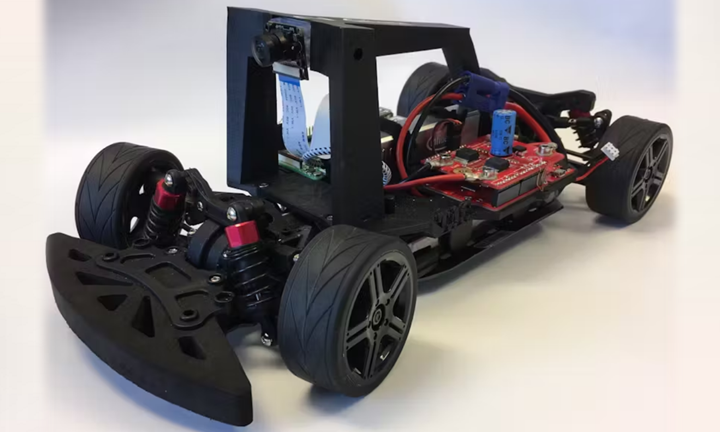
Autonomous Driving Car
This RC car is equipped with a camera, a Raspberry Pi, an XMC1100 Boot Kit and the DC Motor Control Shield with BTN8982TA.
Learn more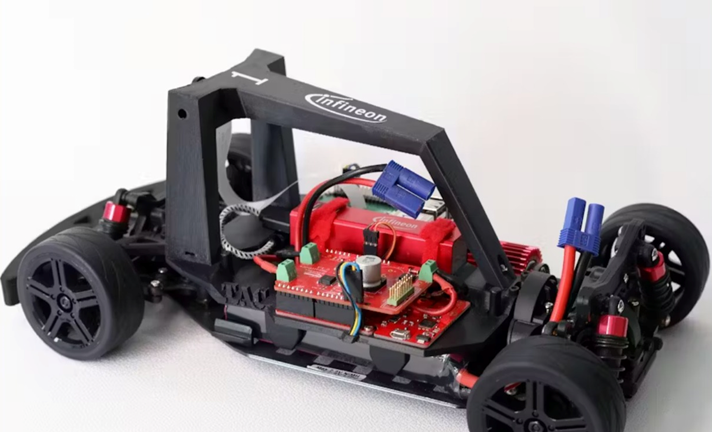
Autonomous Driving Car V2
Learn more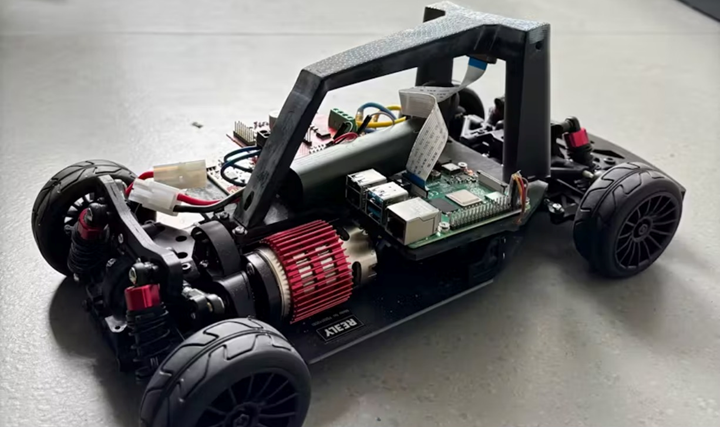
Autonomous Driving Car V3
Learn moreBehind the scene - How a student ensured that you do not fail with your project
Development and documentation of an autonomous driving car V3 by Eren Arslan Ramazan. (Degree program, semester: Computer Science, 6th. Semester)
The project and the main goal
My project was about the further development and documentation of the construction of an autonomous vehicle. The aim was to develop an optimized variant (V3) for the vehicle that can navigate autonomously and safely through different environments.
The main goal was to create a hardware base and document it on Hackster.io in such a structured way that it would be as easy as possible for students to replicate it and that it would also be motivating because everything was carefully documented. This hardware basis can then be used to develop and test AI algorithms for student competitions. Teams from Germany and around the world will be able to optimize the vehicle with their own advanced AI algorithms and improve it with easily addable sensors so that they can then compete against each other. Hardware basis: Autonomous Driving Car V3 - Hackster.io (documentation)
A kind of predecessor of my vehicle, the 'Schaeffler FAG Model MF3', has been standing in the first corridor of our building since 2009 and served as inspiration for a contemporary autonomous driving successor.
Project describtion and the goal.
The project was to further develop an autonomous vehicle. My personal goal was to understand and improve the technology behind autonomous vehicles by optimizing sensors, algorithms and control systems. The vehicle uses advanced AI capabilities to make real-time decisions and navigate safely. Through my work, I was also able to show how to use a simulator and control this vehicle via an app.
How the idea for this project came up
The idea came from my interest in modern technologies and the growing importance of autonomous systems in the automotive industry. The vehicle on display in the THWS building inspired us. The history of the Schaeffler FAG Model MF3 vehicle, which is exhibited in the first floor corridor of the THWS building, gave us the idea of bringing tradition and innovation into a context. I also was inspired by my participation in the Carenuity Home Challenge, in which I had already successfully developed innovative sensors for smart homes.

How tasks were distributed
Although I worked alone, the support of ChipGlobe/Carenuity and the partner Infineon Technologies AG was very important. Infineon and ChipGlobe provided the hardware. The exchange with ChipGlobe and Infineon was constructive, and I was able to learn a lot from their expertise and bring it into the project.
Collaboration
The collaboration was productive and cooperative. We were able to learn a lot and support each other. Fast communication via a messenger was crucial for our success and brought us closer together, so that I will also receive support from ChipGlobe / Carenuity in another new project.
The biggest challenge during the project and how we dealt with these difficulties as a team
The biggest challenge was integrating the various hardware and software & AI systems and ensuring that the vehicle worked reliably and safely. Real-time decision making and precise navigation were particularly challenging. The biggest challenge for me was making sure everything worked together, as some of the projects and libraries used in this car were outdated and debugging took time and patience. We used a messenger to communicate via picture and text to discuss problems and find solutions. The support from the university and my professor Dr. Heinz Endres was very helpful.
Collaboration with the university, professors and external partners
The support from the university and ChipGlobe GmbH/Carenuity was very good. Prof. Heinz Endres gave us valuable tips, which motivated us to start our project. The other partner, Infineon Technologies AG, also provided support and access to suitable hardware and technology. A special moment was when our vehicle successfully completed a test track autonomously for the first time. That was a wonderful moment and the successful completion of my work on the project. The final presentation and handover of the vehicle at ChipGlobe in Neubiberg was also a highlight.
The result of the project that makes me and my team particularly proud
I am particularly proud of the fact that other students around the world can now use my documentation to build their own vehicle quickly and easily so that they can test and improve their own AI algorithms. And this platform is available to talented people worldwide, so they can build their own vehicles, equip them with their algorithms and, if necessary, add further sensors to further optimize the overall system.
Suggestion:Perhaps we can exhibit the autonomous vehicle next to the 'Schaeffler FAG Model MF3&aapos; in the first corridor of the THWS as an inspiration for further successful student projects involving sensors and AI. The documented project provides numerous starting points for new innovative solutions and further developments.
Campaign or project reception by the target group and valuable feedback recieved
The rollout at universities is still pending. Another university has already been identified and approached by ChipGlobe GmbH/Carenuity. The partner Infineon Technologies AG will probably also provide strong support there. Perhaps the THWS can also follow up with further projects.
Important learnings from the project
I learned how important teamwork, communication and continuous learning are. Personally, I learned a lot about autonomous systems and project management. As a team, we have learned how important it is to be flexible and to support each other. Personally, I learned how to plan and implement complex systems holistically. Another particularly important learning for me was how to deal with problems effectively.
New skills develop or improve through the project
The project enables students worldwide to improve their technical skills in the areas of sensor technology, programming and system integration. It also strengthens their soft skills such as teamwork and problem solving. Working with advanced AI and real-time decision making was particularly valuable to me. It allowed me to significantly improve my skills in embedded systems, C++ programming and documentation.
Project influence
The project showed me how exciting and diverse the opportunities in my degree program are. It also sparked my interest in a career in autonomous vehicle technology. The experience has given me new perspectives and ideas for my professional future. Definitely. I have gained many new ideas and perspectives that I would like to use in future projects and my professional career. Working on this project has shown me the importance of innovation and continuous learning. Yes, definitely. I can now see more clearly that I want to work in the field of embedded systems and AI. The project has shown me how exciting and diverse these topics are. It also gave me an idea for my development project next semester: I might like to develop an autonomous driving system for use in agriculture to automate simple manual processes there.
Tips for other project groups
Get in touch with companies. ChipGlobe GmbH/Carenuity launched the Carenuity Home Challenge in the THWS lecture hall and drew winners. Communication with people, in my case at ChipGlobe GmbH/Carenuity, who work directly in the respective field is extremely valuable. Their advice and experience often help to solve problems more quickly or to gain new perspectives. Work closely together, communicate and utilize the resources and support available to you. Be flexible and willing to learn from mistakes. Take every opportunity to upskill and develop new skills.
Conclusion
I got to know Carenuity, the company with which I implemented this project, through the “Home Challenge” competition. This was organized by my digital technology professor Prof. Dr. Heinz Endres together with ChipGlobe/Carenuity to bring us students closer to learning in a playful and practical way. In the end, I was successful in the challenge and stayed in contact with Carenuity. This ultimately gave rise to the further idea of also tackling this “Autonomous Driving Car V3” project together. I think such additional activities as part of the lectures are extremely valuable - they not only offer learning experiences, but also real opportunities for personal and professional development. Article on the Home Challenge: Practical approach to studying: building motion detectors yourself
Publication
Our project partner has agreed to the publication.
Further links:
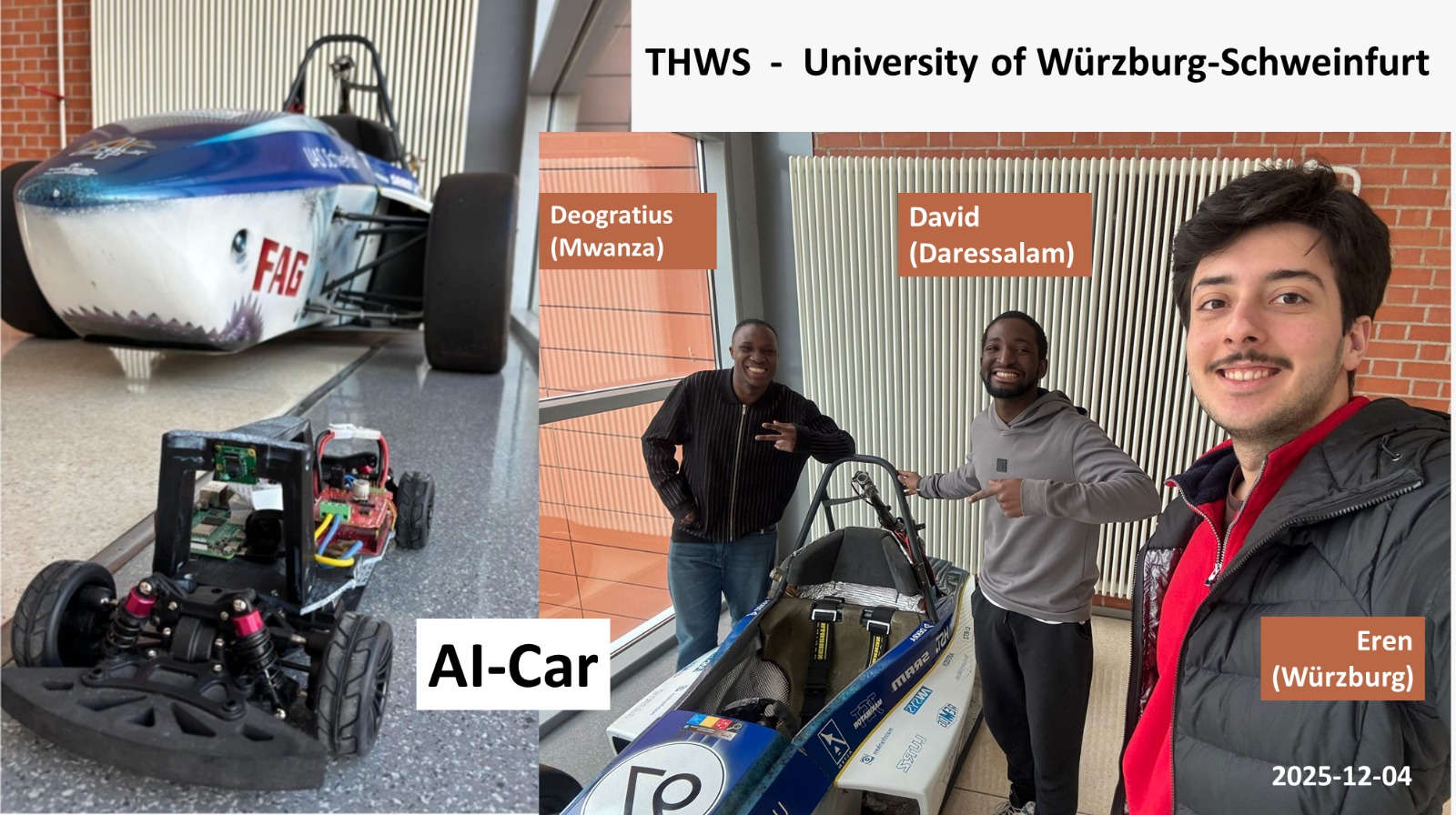
Eren met with Deogratius and David, robotics and mechatronics students in their 5th and 7th semesters, in Schweinfurt at THWS. He introduced them to the development process of the AI-Car platform, as outlined in the Autonomous Driving Car project.
The Schaeffler FAG Model MF3 offered an ideal spot for the mandatory selfie. Both students expressed strong interest in contributing to the AI-Car and supporting its continued expansion with more Infineon Sensors integrated into the Infineon AI-Car platform.
Build with us - your own car
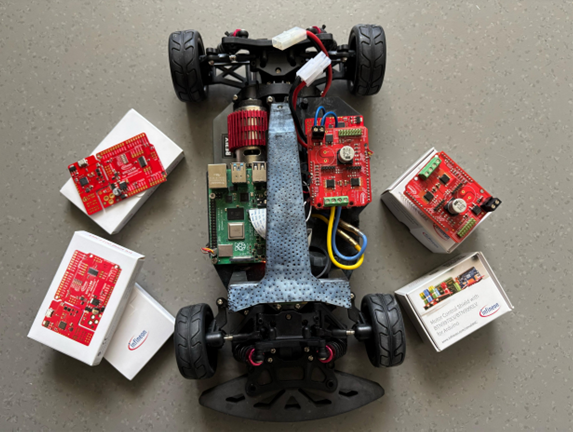
Autonomous Driving Car
The Autonomous Driving Car by Infineon provides an innovative solution for self-driving cars. Equipped with a camera, a Raspberry Pi, and the XMC1100 Boot Kit, it allows control via smartphone, tablet, or laptop. Integration into the Donkeycar project offers hands-on experience with artificial intelligence and neural networks.
